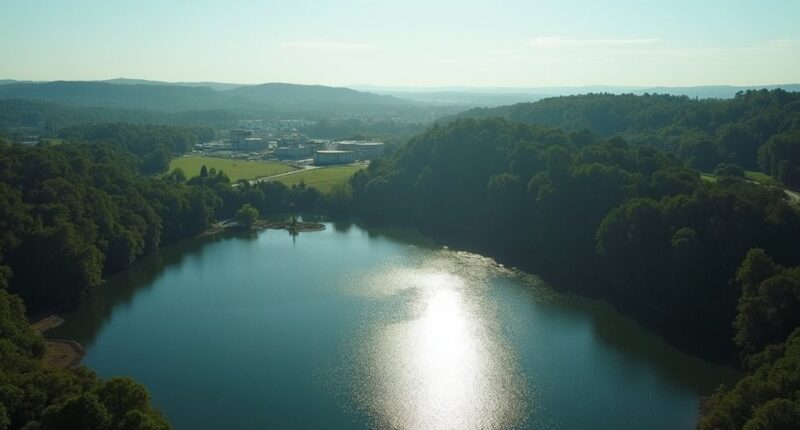UK military bases pose a troubling threat to local drinking water due to alarming PFAS contamination. These “forever chemicals,” originating from firefighting foams, have seeped into soil and groundwater, leading to dangerously high levels at sites like RAF Benson and Coningsby. In fact, some PFOS levels exceed legal limits by a staggering margin. It’s a bit like finding a leaky roof and discovering the entire house is flooded. Curious how this affects communities? There’s more to uncover.
PFAS Contamination at UK Military Bases
What could be lurking in the drinking water at UK military bases? As it turns out, a particular set of chemicals known as PFAS (per- and polyfluoroalkyl substances) could be making their way into local water supplies, and the situation is more alarming than a cat stuck in a tree. These compounds, often found in firefighting foams like Aqueous Film Forming Foam (AFFF), have been linked to serious health issues. The military has historically used AFFF during training drills and emergencies, unwittingly allowing high concentrations of PFAS to seep into the soil and groundwater.
The contamination is not just a rumor. Sites like RAF Benson and RAF Coningsby have reported groundwater samples containing PFOS levels as high as 7,700 ng/l and 3,550 ng/l, respectively. To put this in perspective, the maximum allowed level for drinking water in England and Wales is just 100 ng/l. That’s quite the discrepancy! There’s even a former RAF Duxford site potentially responsible for high PFAS levels affecting nearby homes. Regular water quality monitoring is essential to track the presence and concentration of these persistent chemicals over time. Additionally, reports indicate that up to 10,000 locations across England may be polluted with PFAS substances, raising alarm about the extent of the issue.
Sites like RAF Benson and RAF Coningsby show alarming PFOS levels, far exceeding safe drinking water limits.
The journey of PFAS doesn’t stop at the soil. They can migrate through groundwater into public drinking water supplies, and surface runoff can carry these troublesome chemicals straight into rivers and reservoirs. Despite the Ministry of Defence‘s assurance that they are compliant with regulations, the reality is more convoluted. They are a private water supplier, which means they’re not legally obligated to test for PFAS, leaving communities in the lurch. Moreover, atmospheric deposition has led to PFAS being detected in rainwater, further complicating the contamination issue.
Health risks associated with PFAS exposure range from thyroid disease to various cancers, making this issue more than just a passing concern. The Royal Society of Chemistry is even calling for stricter limits on PFAS levels in drinking water. So, as military bases deal with this lurking threat, the question remains: how safe is the water that millions depend on?









